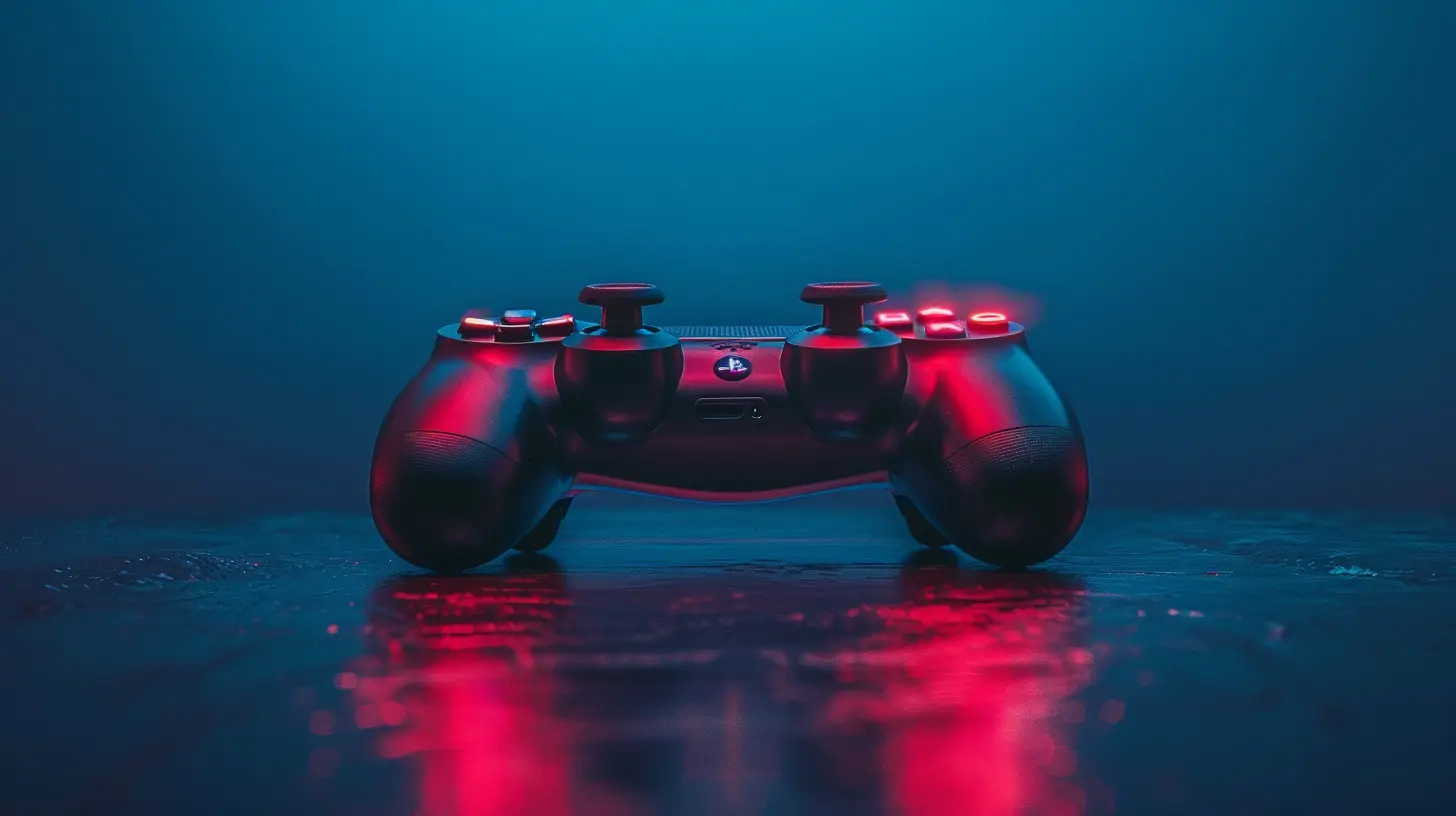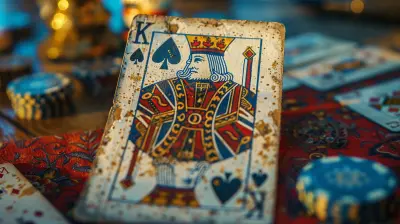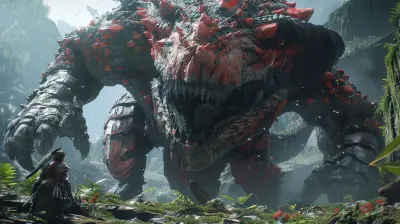The Untold Stories of Gaming Pioneers You’ve Never Heard Of
25 November 2025
When we think of the pioneers of gaming, a few big names might pop into your head: Shigeru Miyamoto (the mastermind behind Mario), Hideo Kojima (the genius behind Metal Gear), or even John Carmack (the brains behind DOOM). But here’s a fun twist: there’s a whole world of unsung heroes whose contributions to the gaming industry are just as impactful. These folks might not have the spotlight, but their stories are fascinating, filled with creativity, innovation, and sometimes even sheer audacity.
So, grab your favorite gaming headset, sit back, and join me as we take a deep dive into the untold stories of gaming pioneers you’ve never heard of. 
The Unsung Architect of Text-Based Adventures: Don Woods
You love narrative-driven games, right? Maybe you’ve sunk hours into games like The Witcher 3 or Life is Strange. Well, the seeds of storytelling in gaming were planted decades ago by a guy named Don Woods, the co-creator of the groundbreaking text-based adventure game Colossal Cave Adventure.It all started in the 1970s. Don stumbled upon an early version of Colossal Cave, created by another pioneer named Will Crowther. Woods, inspired by Crowther’s work, expanded it into a sprawling, interactive story. This wasn’t just a game; it was like writing a novel where the player got to decide the ending. For its time, that was mind-blowing!
Without Woods, we might not have narrative-driven games today. He didn’t just code; he laid the groundwork for storytelling mechanics that modern RPGs and adventure games still use. So, the next time you’re immersed in a gripping game storyline, give a virtual nod to Don Woods. 
Carol Shaw: The First Lady of Gaming
In the 1980s, gaming was a male-dominated world. It wasn’t just rare to see women working in the industry; it was practically unheard of. Enter Carol Shaw, the first female game designer.She worked at Atari and later Activision, where she created River Raid, one of the most iconic shoot-’em-up games of its time. What made Shaw’s work revolutionary wasn’t just the gameplay mechanics (though they were stellar). It was the fact that she proved women could not only participate in the gaming industry but could lead the charge in innovation.
River Raid was ahead of its time, featuring procedurally generated levels—a feature that modern games like Minecraft popularized decades later. Carol Shaw broke barriers and paved the way for countless women in gaming development today. Think of her as the hidden gem of retro gaming. 
Jerry Lawson: The Man Who Revolutionized Game Distribution
Ever wondered who came up with the idea of game cartridges? You know, those chunky plastic modules you’d blow into (don’t deny it) before sliding into your console? Meet Jerry Lawson, a tech wizard who turned gaming on its head.Back in the 1970s, Jerry worked at a company called Fairchild Semiconductor. There, he led the development of the Fairchild Channel F, the first console to use interchangeable game cartridges. Before this innovation, games were hardwired into the console itself. Want a new game? You’d basically have to buy a whole new console. Lawson’s invention opened the floodgates for the massive gaming industry we know today, enabling companies like Nintendo and Sega to thrive.
Despite his game-changing contribution, Jerry Lawson’s name often gets overlooked. Yet, without him, there’s a good chance you wouldn’t have experienced classics like Super Mario Bros. or Sonic the Hedgehog. 
Roberta Williams: The Mother of Graphic Adventures
While male developers were dominating the gaming scene, Roberta Williams quietly reshaped it. Known as the co-founder of Sierra On-Line, Roberta designed King’s Quest, a groundbreaking adventure game that introduced graphics into the genre. Yep, we’re talking about the leap from plain text to full-on visual storytelling.Roberta’s work was like moving from silent films to IMAX blockbusters. With King’s Quest, players could explore colorful, animated worlds while solving puzzles and unraveling stories. It wasn’t just a game—it was an experience.
If you’re a fan of modern point-and-click games like Grim Fandango or episodic ones like The Walking Dead by Telltale Games, you owe a big thank you to Roberta. She was one of the first to realize that games could be beautiful, interactive works of art.
Masayuki Uemura: The Man Behind the Console That Changed Everything
Quick question: What’s the most iconic gaming console of all time? For many, the answer is the Nintendo Entertainment System (NES). Now, let’s talk about the man behind it, Masayuki Uemura.Back in the 1980s, Uemura was tasked with developing a console that could bring arcade-quality gaming into people’s homes. The result? The NES—a system that single-handedly revived the gaming industry after the infamous crash of 1983.
The NES wasn’t just a console; it was a symbol of gaming’s comeback. It introduced us to timeless classics like The Legend of Zelda and Super Mario Bros., and it set the standard for home gaming systems. Yet, Uemura rarely gets the credit he deserves. He wasn’t just an engineer; he was a visionary who redefined what gaming could be.
Gunpei Yokoi: The Genius Behind Game Boy
You’ve probably owned or at least heard of the Game Boy. That chunky, gray handheld console that brought gaming into your pocket? That was the brainchild of Gunpei Yokoi.Gunpei Yokoi was a Nintendo engineer with a knack for inventing. Before the Game Boy, he created the Game & Watch, a series of handheld games that laid the foundation for portable gaming. But it was the Game Boy that cemented his legacy.
The brilliance of the Game Boy wasn’t its power or graphics—it was its simplicity and durability. Yokoi believed in creating “lateral thinking with seasoned technology,” which meant using proven, affordable tech in innovative ways. Thanks to Yokoi, gaming became portable, opening the door for handheld systems like the Nintendo Switch and mobile gaming as we know it.
Danielle Bunten Berry: The Multiplayer Maven
Think about the countless hours you’ve spent playing online multiplayer games like Fortnite, Call of Duty, or Among Us. Now, meet Danielle Bunten Berry, a trailblazer who championed the idea of multiplayer gaming way before it was cool.In 1983, she created M.U.L.E., a multiplayer strategy game that emphasized cooperation and competition. At a time when most games were single-player experiences, Berry was already dreaming of a connected gaming future.
Unfortunately, Danielle didn’t live to see how far her vision would go. But her groundbreaking work remains an inspiration to game developers focused on multiplayer experiences today. In a way, she was the bridge between gaming as a solitary pastime and gaming as a shared global phenomenon.
Alexey Pajitnov: The Man Who Gave Us Tetris
Okay, maybe you’ve heard of Alexey Pajitnov, but do you really know his story? Pajitnov was a computer engineer in the Soviet Union who created Tetris in 1984—not for fame or fortune but simply as a fun programming project.Here’s the kicker: due to Soviet laws, Pajitnov didn’t own the rights to Tetris for years. That’s right—the game exploded in popularity worldwide, yet Alexey didn’t see a dime initially. Despite this, he remained humble and passionate about his craft. Eventually, the rights were returned to him, and he’s now recognized as one of gaming’s quiet legends.
Tetris is more than just a game; it’s a phenomenon. It’s been ported to almost every device imaginable, and its influence can be seen in puzzle games around the globe.
Why These Stories Matter
Gaming is more than just high scores and flashy graphics. It’s a world built on the shoulders of visionaries who dared to dream differently. These pioneers—a mix of inventors, programmers, and artists—shaped the industry in ways we often take for granted.The next time you pick up a console or dive into an RPG, pause for a moment and think about the hidden figures who made it all possible. Their stories might not be told as often, but their contributions are woven into the very fabric of gaming history.
all images in this post were generated using AI tools
Category:
Gaming HistoryAuthor:

Madeleine McCaffrey

